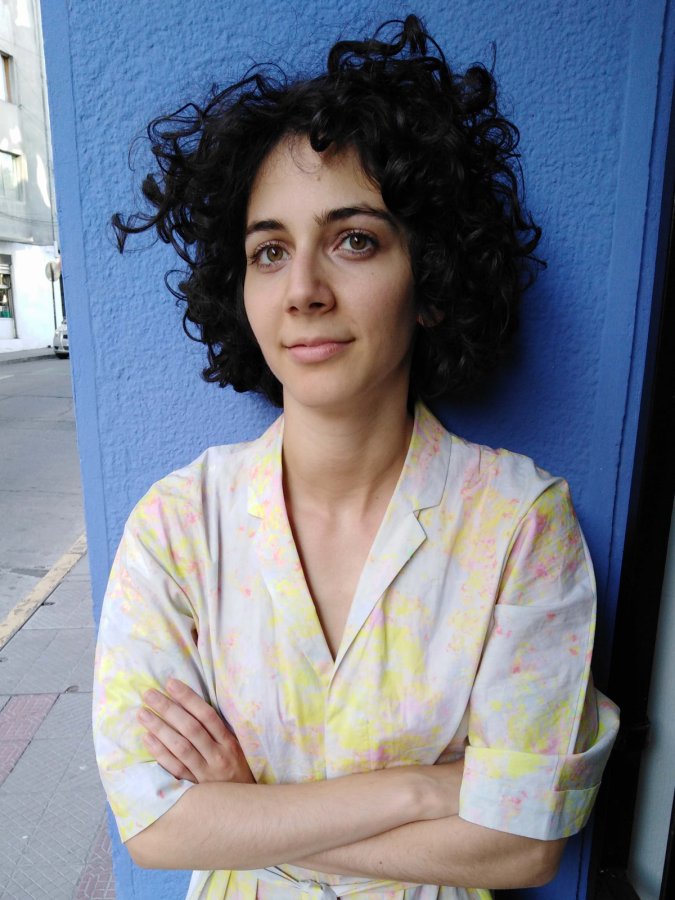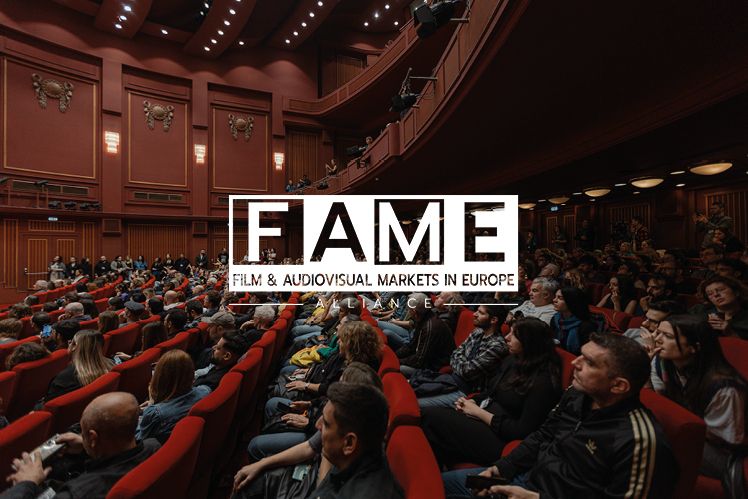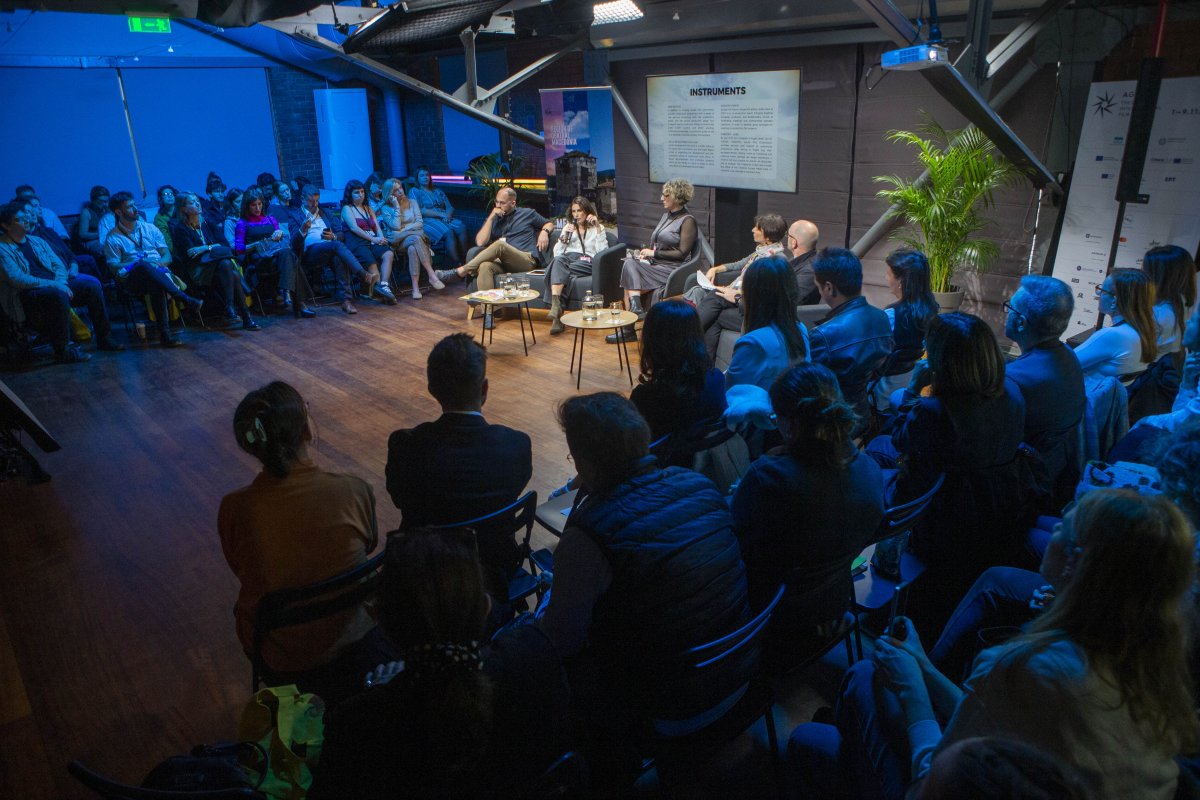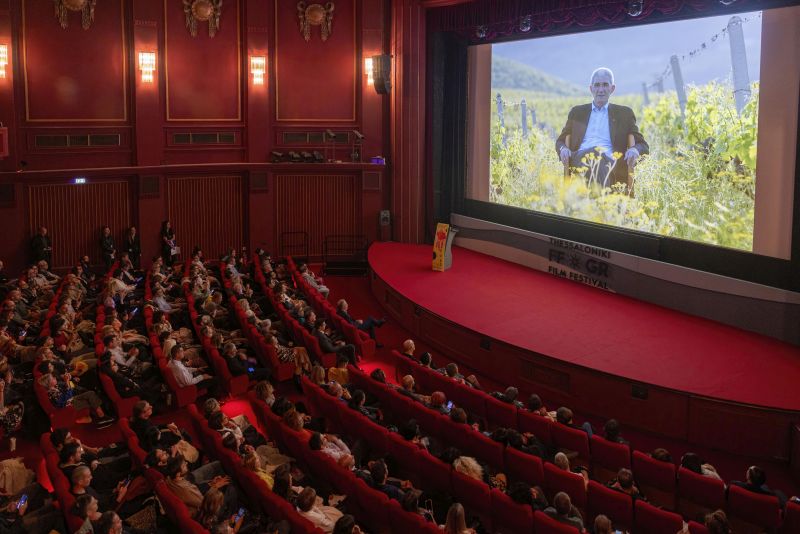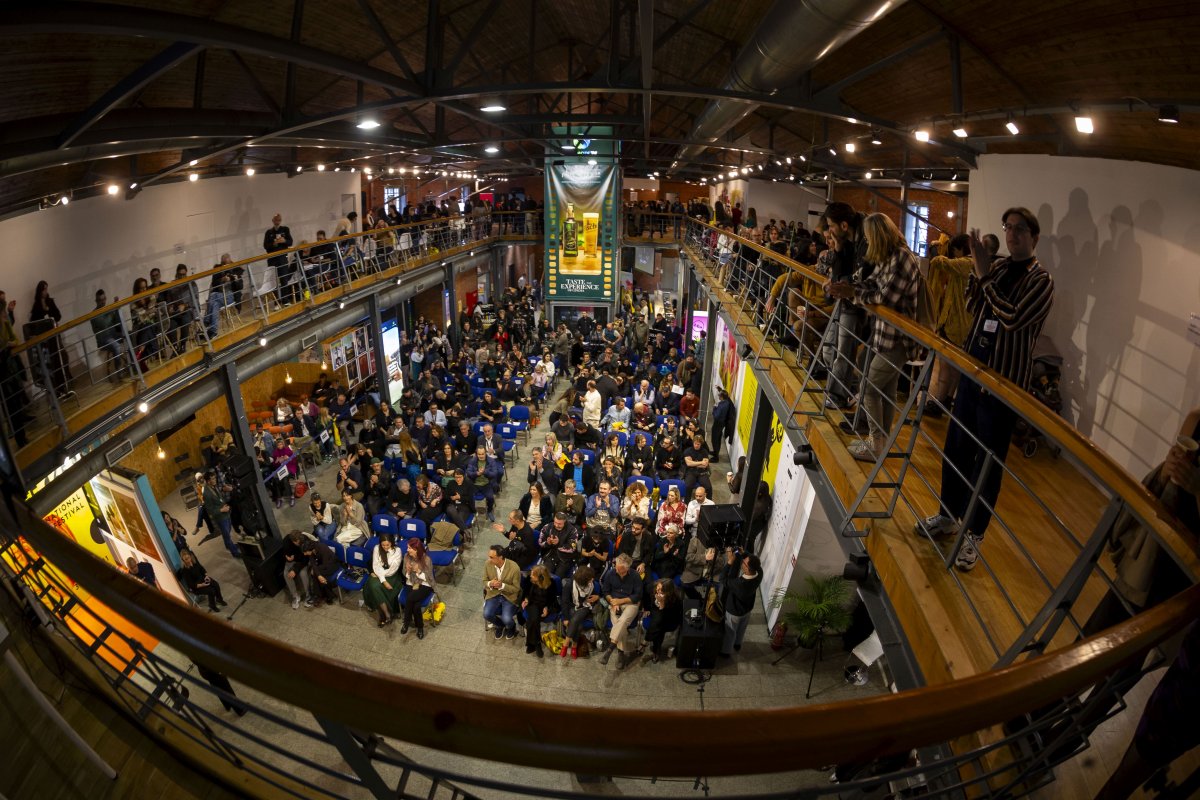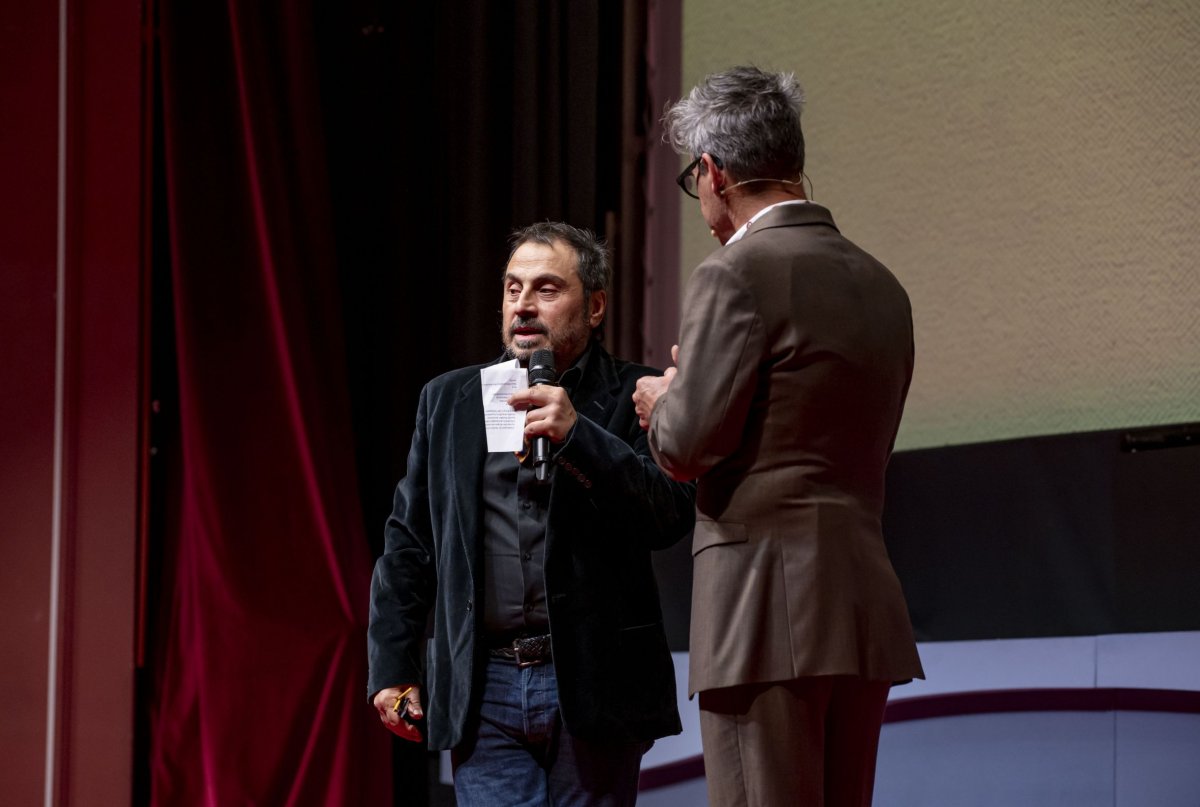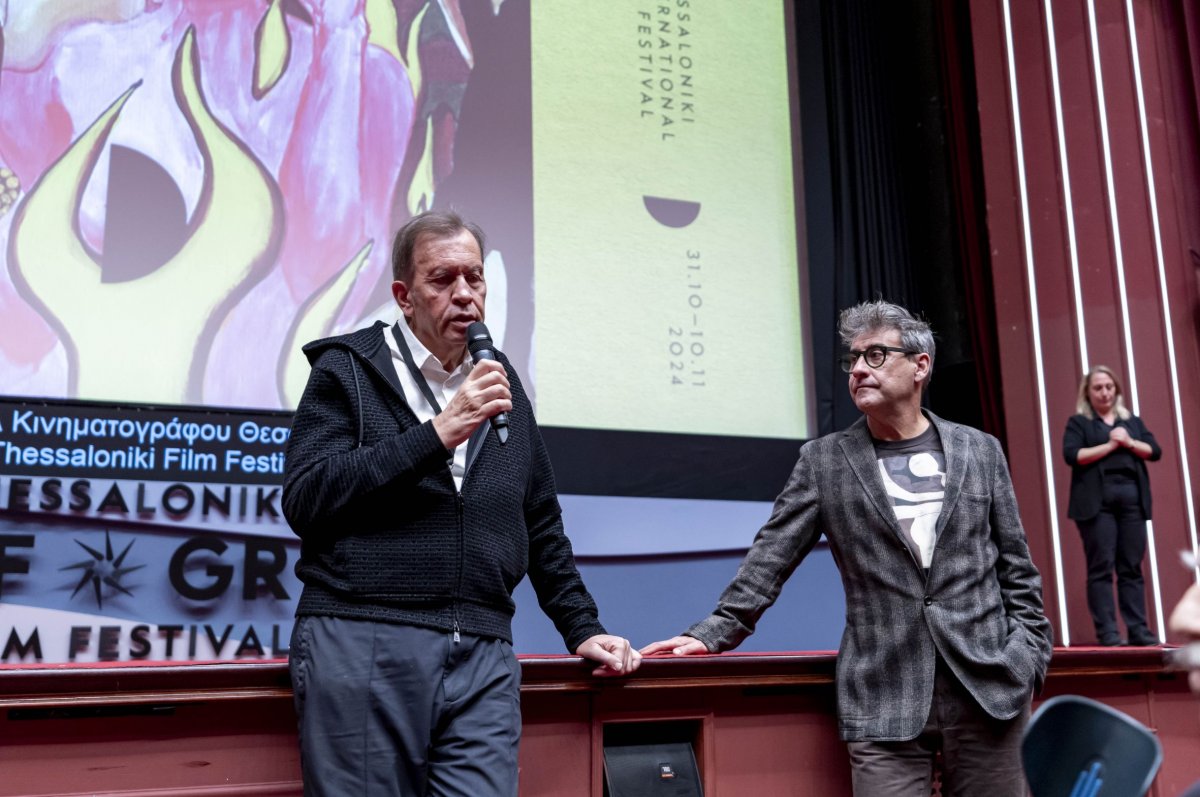The 26th Thessaloniki International Documentary Festival is presenting a special two-language edition, dedicated to the cinema manifestos that have shaped, transformed and redefined the theoretical identity and the content of an ever-evolving genre. In an era where the notion of manifestation/manifesting is dominant in every aspect of modern life, from social media to the public sphere, social movements and artistic creation, the Festival is making a return to the fundamental principles of documentary and cinema, re-introducing a corpus of timeless yet always timely declarations. The edition of this year’s Festival is complemented by a mini tribute featuring film films that draw parallels with some of the most influential manifestos in the history of cinema.
The lavish special two-language edition of the Festival, which thoroughly examines a total of 24 cinema manifestos from top-notch filmmakers and film theorists, navigates us in the journey of the documentary genre through cinema and history. Jean-Luc Godard’s manifesto (1970) echoes the beginning of his maoist period and his admiration of the theories and the legacy of Dziga Vertof. Jill Godmilow (2002) sets the internalization of the auteur identity as priority, reminding us that a documentary’s goal is not to write history, but to unfold stories. Ο Jim Grierson (1932), in his First Principles of Documentary, criticizes the romanticized exotism of studio productions, prioritizing documentary’s social responsibility. The legendary DOGMA ’95 (1995) addresses a call to documentarists to embrace a “vow of chastity”, that casts a spell over the spectrum of the auteur theory, redefining the fundamental rules for all structural components of the film construction. The Manifesto for a Non-Sexist Cinema (1974) formulated by the Fédération européenne du cinéma progressiste interweaves cinema with the feminist claims and the struggle against the patriarchal status quo. Moving along a similar wavelength, Womanifesto (1975) acknowledges woman emancipation as one of the driving forces of the art of cinema. An offspring of the same period of reaction against the conservative structures and the authority of the male gaze in cinema, the manifesto of Maria Klonari and Katerina Thomadaki brings forth the urge of radicalization as the spearhead for a new cinema.
Mark Cousins (2012) incites film festivals to stand up against the dictates of commercialism, and remain open to the truly groundbreaking ideas and suggestions. Victor Kossakovsky lays out his Ten Rules for Documentary Filmmaking (2006), inviting documentarists to avoid the didacticity of the predetermined message. Film archivist and curator Paolo Cherchi Usai, in The Lindgren Manifesto: The Film Curator of The Future (2010), honors the memory of Ernest Lindgren, founding curator of the British Film Institute, while sharing a series of thoughts on the safeguarding and preservation process of the film heritage. Ana Kronschnabl, in her Pluginmanifesto (2001), praises the benefits and the unexplored possibilities offered by the tech revolution of the early 21st century. Vitaly Manskiy in his Reality Cinema Manifesto (2005), confers the quality of the open ending to the documentary genre, in accordance with the rhythms and the flow of real life. Gregory Markopoulos, in Elements of the Void (1967), dissects the new language of the image, expressing the hope that it eventually leads to the birth of new national cinematographies. Albert Maysles (2008) asserts his conviction that the mission of a documentarist is no other than to capture the truth of the moment and convey it to the audience. Oswell Blakeston (1933) seeks the lost academic spirit of documentary, dismissing the far-from-necessary embellishment of the genre.
Sally Potter in her Barefoot Filmmaking Manifesto (2009), is in search of a “naked cinema”, bringing forth the need of maintaining artistic independence against the financial and any other kind of pressures. Jesse Richards, in his Remodernist Film Manifesto (2008), runs through several structural concepts of Japanese culture, looking for the spirituality of cinema in the depiction of simple everyday moments of the ordinary man. Jay Ruby (2003) opts for a fresh breath of ethnographic cinema, more experimental and less hooked up on the predetermined purpose of a vague realism. Stavros Tornes, in Why Do I Make Films? (2008) denounces the futile hunting of visual excellence in cinema, giving precedence to the liberating energy of the unforeseen. Werner Herzog, in his manifesto The Minnesota Declaration: Lessons of Darkness (1999), deconstructs the content of cinéma vérité and explores the blurry between fact and truth within the realm of the documentary’s truth. The edition also includes a text written by Orestis Andreadakis, the Festival’s Artistic Director, who enunciated 20 points on the new era of the documentary in Documentary, the Imitation of Reality and the Non-Reality of Imitations (2020), binding together facts and views of the modern world with the identity of the genre.
Radical and deeply influential theories, which serve as a basis of interpretation and the starting-off point for the study of cinema, art, culture, and society, take center stage in the tribute of the 26th TiDF. The kinochesfvo of the pioneer Dziga Vertov places the capturing of the never-ending movement of things and life, drawing up a letter of awe for the function of the movie camera. Peter Wintonick, one of the most prolific figures in the history of the documentary, through Doc the World: My Personal Manifesto and Credo (2007), reinvigorates his doctrinal belief on the historical legacy of cinema, the stepping stones of the old masters, and the moral and educational value of documentaries. The Defocus Manifesto (2000) by - the always eager to challenge any established conventions - Lars von Trier, places emphasis on anything sidelined and marginalized by the mainstream trend, liberating the documentary from the linear and factual narrative. The avant-garde Lettrism movement, led by the Romanian versatile artist Isidore Isou, delved into the allegorical dimension of visual symbols, expanding the boundaries of art image semiotics. Guy Debord’s Situationism, a current that studied as no other in its time massive culture, vocalizing prophetic position on the transformation of modern life into a consumerist spectacle.
The five films of the tribute:
Cinéma Vérité: Defining the Moment
Peter Wintonick
Canada, 1999, 110’
A feature documentary about documentary, Cinéma Vérité: Defining the Moment is a major retrospective of some of the century’s finest non-fiction films, and a celebration of the contemporary legacy of the Cinéma Vérité revolution of the 1950s and early 1960s. The revolution had many names: Free Cinema, Direct Cinema, Candid Eye, Cinéma Vérité – and it broke out simultaneously in England, France, the USA, and Canada. Wherever it appeared, the form marked a completely new way of understanding film, the audience and the world. The world of Cinéma Vérité filmmaking was created by a group of driven, dedicated rebels who did for documentary what Henri Cartier-Bresson did for photography. All the key players, including Michel Braulty, Robert Drew, Wolf Koenig, Richard Leacock, the Maysles brothers, Donn Pennebaker, Pierre Perrault, Jean Rouch, Hope Ryden, and Fred Wiseman, are featured in this film. Their use of lightweight, hand-held cameras and portable sound equipment, along with their unfailing commitment to recording reality as they saw it, revolutionized not only the documentary form, but all forms of movie-making. Set against the stilted, lecture-style documentary that preceded them, these works remain evergreen – equally fresh and original as when they first appeared.
Critique of Separation
Guy Debord
France, 1961, 17’
“The cinematic spectacle has its rules, which enable one to produce satisfactory products. But dissatisfaction is the reality that must be taken as a point of departure. Whether dramatic or documentary, the cinema functions to present a false, isolated coherence as a substitute for communication and an activity that are absent. To demystify documentary cinema it is necessary to dissolve what is called its subject matter.” In this fascinating, seminal anti-film, Guy Debord articulates in full flesh his situationist manifesto, superimposing subtitles and a documentary-style commentary on a catalog of newsreel footage, book covers, rephotographed photographs, views of Paris’ neighborhoods, and seemingly candid footage of him and his friends in wandering between cafes and the street. Whereas the conventions of narrative fictional film would oblige us to separate the filmmaker Debord from both the voice of the film’s commentary and from the “character” played by Debord, a man in his late twenties pursuing a young girl who appears to be no more than seventeen.
Man with a Movie Camera
Dziga Vertov
USSR, 1929, 67’
Bottomless invention and frenetic, dizzying montage make this city symphony one of cinema’s sharpest, most exciting experiences nearly a century after its release, still ranking as one of the essential ingredients of modernist cinema. A decade into his career as both filmmaker and theorist, Dziga Vertov made his best-known and most widely distributed film manifesto. A cameraman tries to capture urban life in Soviet society, home of the ‘New Man’, with all its machine-powered technology. The man with the camera filmed Odessa for 24 hours, starting in the early morning – the city is still asleep, the gears, wheels, and engines are motionless – until the late evening. Gradually the city picks up speed and momentum. This narrative-free portrait of city life – three unidentified cities provided the locations – is propelled by an effervescent delight in the possibilities of film, with its unexpected angles and clashing juxtapositions. Vertov wanted to create an 'absolute film language' that was completely divorced from the language of theater and literature. The result is an experimental work that makes use of numerous new film techniques, with the montage producing an overwhelming avalanche of footage.
On Venom and Eternity
Isidore Isou
France, 1951, 120’
On Venom and Eternity was the first Lettrist film manifesto. Isou brought it uninvited to the Cannes Film Festival (1951) where it won the audience prize for the avant-garde. Jean Cocteau's poster promoted the 1952 release on the Champs-Elysées. The film is Isou's "revolt against cinema": the sound and the picture are purposefully unrelated, and the images are destroyed by bleach and scratched. The film is a landmark work that prefigured the letterist and situationist cinema to come and influenced many experimental filmmakers.
The Five Obstructions
Jørgen Leth, Lars von Trier
Denmark, Belgium, Switzerland, France, 2003, 90’
Lars von Trier enters the world of documentary filmmaking with a meticulous manifesto with an unprecedented mission. Together with Danish documentary film veteran Jørgen Leth, Trier takes on the task of challenging conventional ways of documentary and film production. Both directors share a fascination with getting into the bone of filmmaking. Down to basic elements, simplicity of image and sound. In 1967 Jørgen Leth made a 12-minutes short film called The Perfect Human, a document on human behavior containing the familiar Leth themes – a film that Trier greatly admires and claims to have seen more than 20 times. In the year 2000, Lars von Trier challenged Jørgen Leth to make five remakes of this film, but each time Trier brought forward more obstructions, prompting Leth to re-think the story and the characters of the original film from 1967. Playing the naive anthropologist, Leth attempts to embrace the cunning challenges set forth by the devious and sneaky Trier. Five times Leth will have to deal with the limitations, commands, and prohibitions made by Trier. It is a game full of traps and vicious turns. A fascinating and never seen film about a filmmaker not only revisiting but also recreating one of his first films. The Five Obstructions is an incredible investigative journey into the phenomenon of filmmaking.
The edition will be released during the 26th TiDF and will be available for sale at the Festival’s counter and the Festival’s e-shop.
Edition-Supervision: Orestis Andreadakis
Coordination: Geli Mademli
Design: Karlopoulos&Associates (Yannis Karlopoulos, Virginia Christakou)
Price: 9 euros




